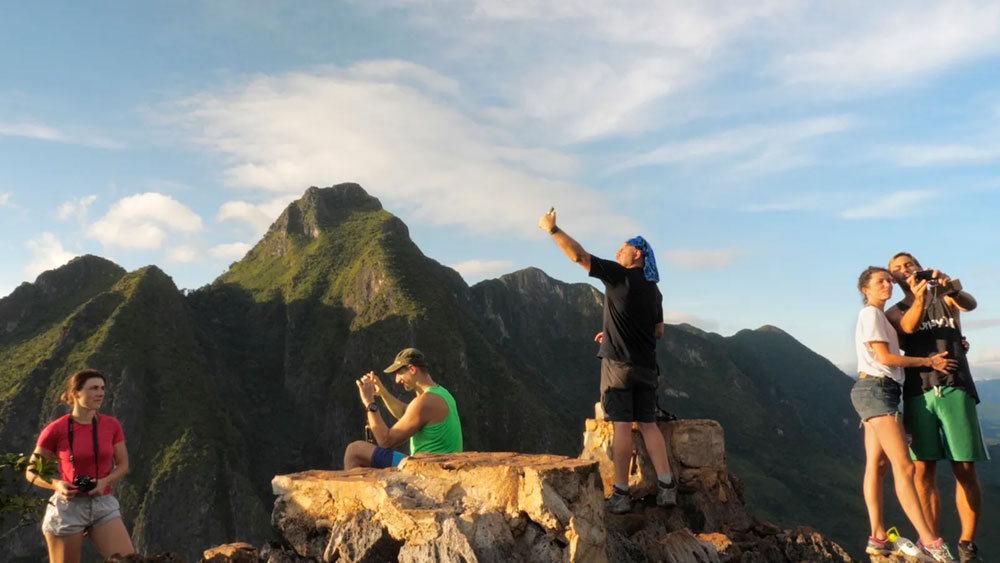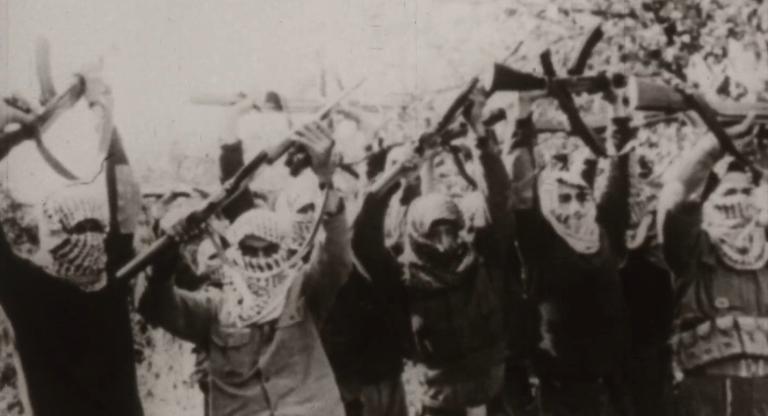In Kimi Takesue’s Onlookers (2023), steady compositions invoke the theatrical stage by establishing fixed dimensions within which people and objects interact with the audience in direct and spontaneous ways. In a series of still shots, Takesue documents several touristy areas in Laos. These shots make the mostly white western tourists their focus while local Laotians preparing food, activities, and other attractions for them, remain in the periphery. The film makes it immediately apparent how local activities become commercial performances for Laotians when they find themselves in the presence of tourists, which the film refers to as “onlookers.”
Despite its focus on the tourist economy’s exploitation of local culture, Onlookers is actually quite amusing because of how its observational style reveals tourism’s embarrassing rituals. The way tourists stick out in Laos is apparent throughout the film. They wear bright skimpy clothing, carry gigantic sacks on their backs, lug a myriad of electronic accessories with them, and are always pointing their cameras at something. Takesue’s framing makes each shot comment on the visual dynamics between tourists and locals in the Laotian landscape. When Takesue points her camera at a group of local Buddhist monks who are walking down the sidewalk in prayer, they remain on the left side of the frame while the right side shows a group of tourists getting ready to snap their camera shutters in the monks’ direction. Later on, in a scene where monks are shown playing instruments while reciting prayers inside a temple, Takesue shows a procession of tourists walk up to the monks, lean in, snap pictures of them, and then walk away. In an interview with Filmmaker Magazine, Takesue said these interactions with monks come about because monks have become “an easy marker of the cultural difference” for tourists. “That’s why people photograph them,” she says. “They’re struck by the beauty of that cultural difference, and that can also be reduced to a kind of exoticism.”
There is an inherent tension to Takesue’s images that suggests an encroachment on behalf of both tourists and the camera on Laos’s local culture. As a group of local women sit on the sidewalk preparing to sell their merchandise, tourists drift in and out of the frame behind them in a frenzy. When the compositions only consist of locals, the film feels lighter. Such scenes include a group of older men happily chatting away while playing a game on the side of the street and several families on the road talking to other families, posing for pictures, praying, and setting up food offerings for itinerant monks. These tonal shifts create an emotional rhythm throughout Onlookers, forcing the viewer to be conscious of the associations between tourists and locals, as well as the relationship between cameras and performances. The film shows that when Laotians cater to their family and friends, their speech and movement is at ease whereas when they are in the presence of onlookers their actions become robotic as a twofold response to the demands of industry and audiences alike.
Onlookers runs through February 22 at Metrograph. Discussions with director Kimi Takesue will follow this weekend’s screenings, in addition to the evening screening on February 21.


